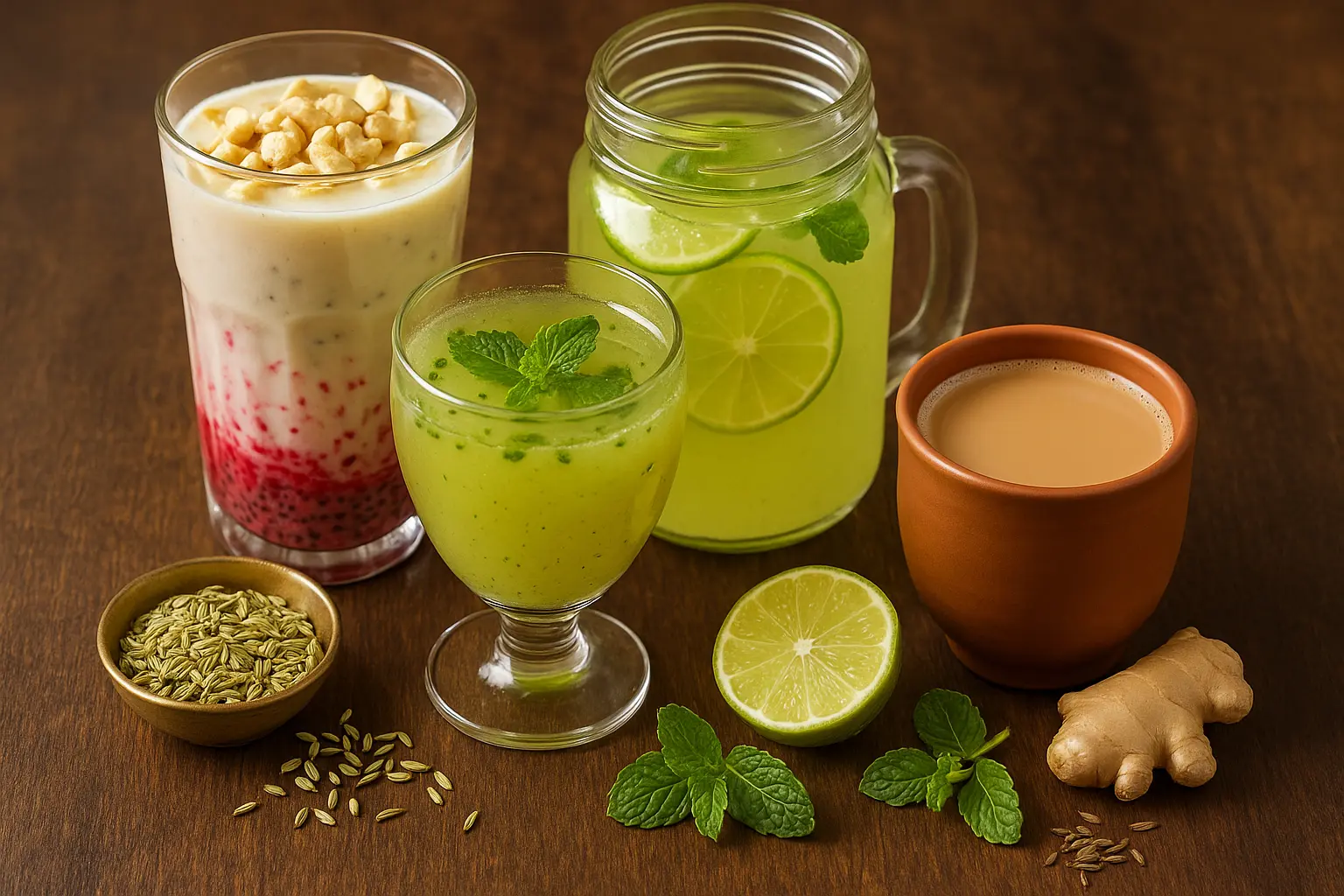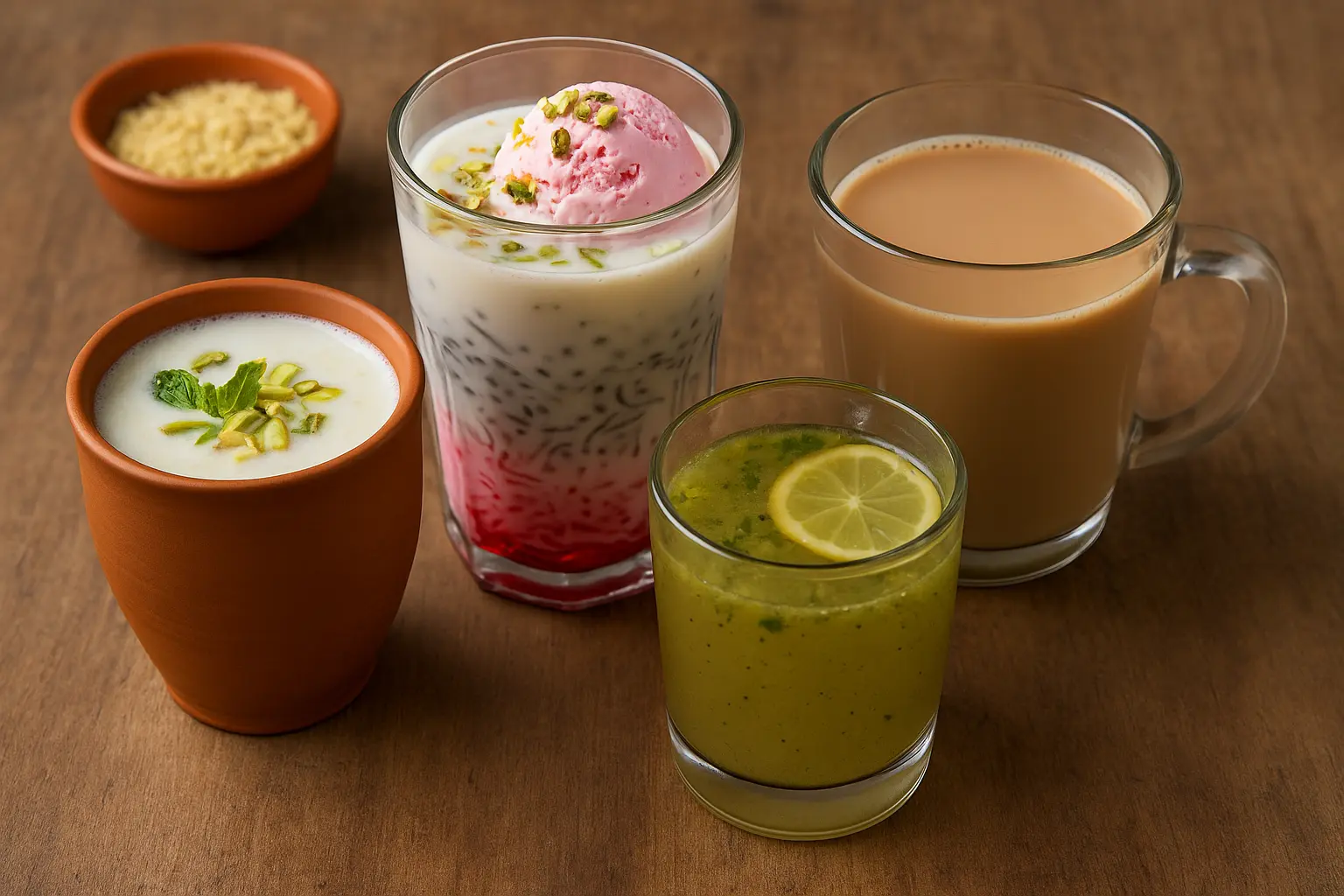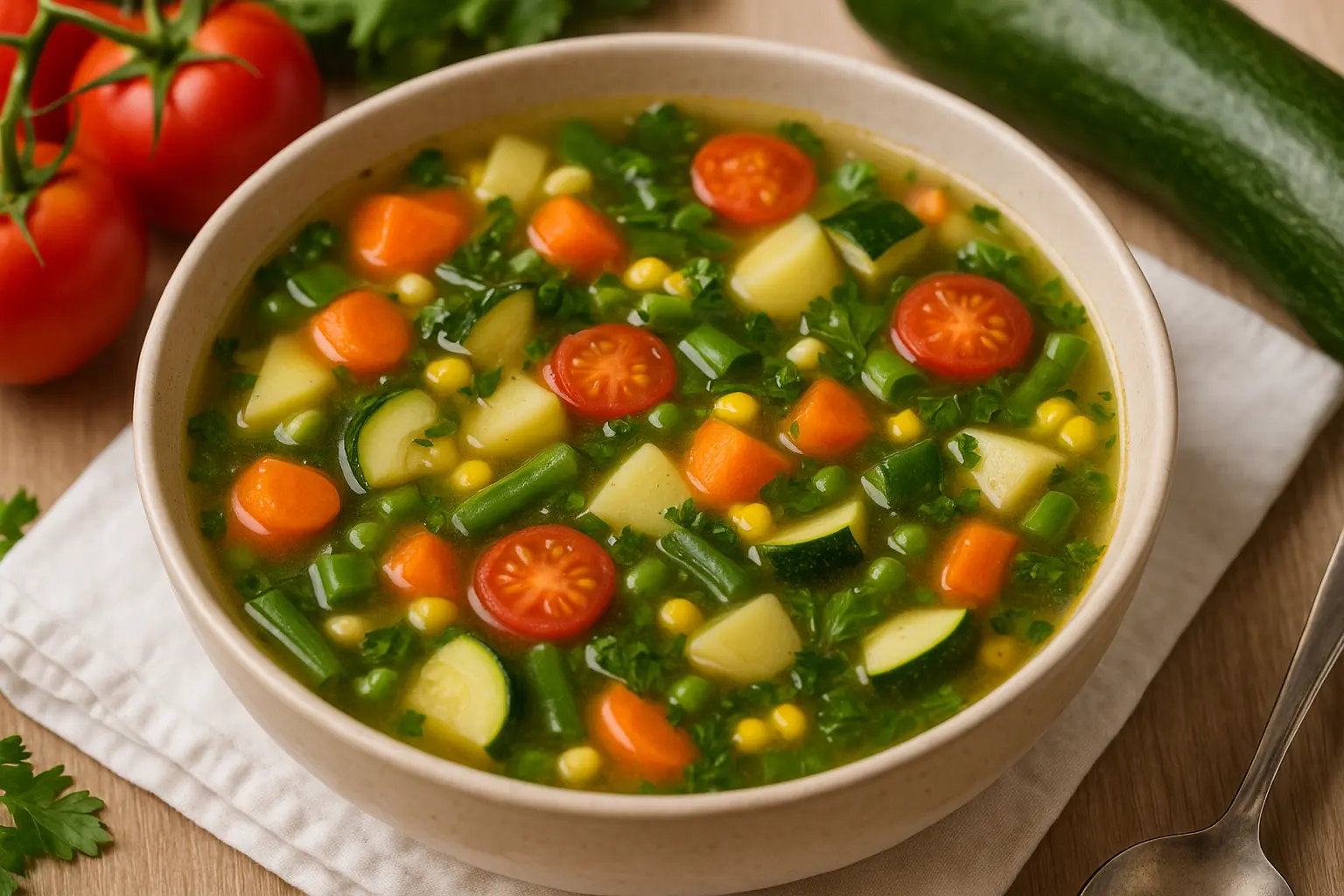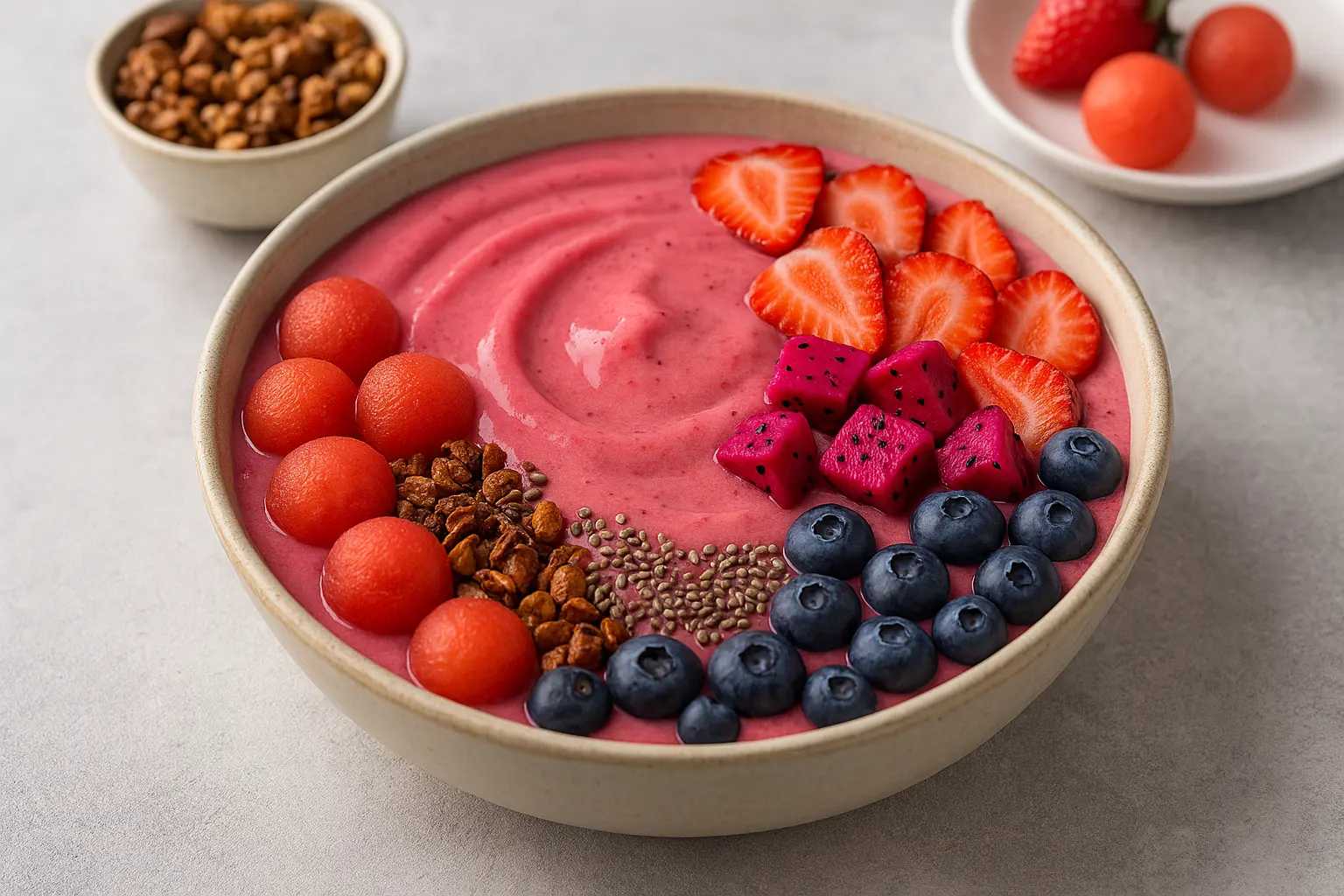If you’ve ever wandered through the bustling lanes of Delhi, the food streets of Mumbai, or the vibrant bazaars of Kolkata, you’ll know that Indian street food is an experience that goes beyond just food—it’s a sensory celebration. While snacks like pani puri, vada pav, and chaat get much of the limelight, Indian street drinks form an equally integral part of this culture. These drinks are not just thirst-quenchers; they are remedies for scorching summers, soothing accompaniments to meals, and nostalgic sips of tradition.
From tangy jaljeera to sweet and creamy falooda, from the classic masala chai to the cooling lassi, each drink reflects the diversity of India’s regional flavors. The best part? You don’t have to wait for your next trip to India or the nearest food fair—you can recreate these beloved street drinks right in your own kitchen.
This guide explores iconic Indian street drinks, their cultural roots, recipes, variations, and practical tips for making them at home.

1. Lassi: The Punjabi Classic Loved Nationwide
What is Lassi?
Originating from Punjab, lassi is a yogurt-based drink that comes in both sweet and savory varieties. On Indian streets, lassi is often served in tall clay cups (kulhads), topped with malai (cream) or even a dollop of butter.
Popular Variations
- Sweet Lassi – Flavored with sugar, cardamom, and sometimes rose water or saffron.
- Salted Lassi – Savory, with roasted cumin, black salt, and fresh coriander.
- Fruit Lassi – Mango lassi is globally popular, but strawberry and banana versions are also common.
How to Make Sweet Lassi at Home
Ingredients (2 servings):
- 1 cup plain yogurt (chilled)
- ½ cup cold water or milk
- 3 tbsp sugar (adjust to taste)
- ½ tsp cardamom powder
- Ice cubes
Method:
- Blend yogurt, water/milk, sugar, and cardamom until frothy.
- Serve in a tall glass with ice cubes.
- Garnish with saffron strands or crushed pistachios.
2. Jaljeera: The Tangy Summer Refresher
What is Jaljeera?
Literally translating to "cumin water," jaljeera is a tangy, spiced drink popular in North India. Street vendors serve it chilled in earthen cups, making it a favorite during scorching summers.
Flavor Profile
Jaljeera combines cumin, mint, black salt, tamarind, and lemon juice, creating a zesty drink that doubles as an appetizer.
Recipe for Jaljeera
Ingredients (4 servings):
- 4 cups chilled water
- 2 tbsp tamarind pulp
- 2 tbsp mint leaves
- 2 tbsp coriander leaves
- 1 tsp roasted cumin powder
- ½ tsp black salt
- ½ tsp ginger powder
- Juice of 1 lemon
Method:
- Blend mint, coriander, tamarind, and spices into a paste.
- Mix with chilled water, adjust seasoning.
- Serve cold with boondi (fried gram flour pearls) floating on top.
3. Masala Chai: India’s Beloved Street Brew
Street Connection
Every corner of India has its chaiwala (tea seller), brewing steaming cups of spiced tea. It’s a cultural phenomenon and a daily ritual for millions.
Classic Masala Chai Recipe
Ingredients (2 cups):
- 1½ cups water
- ½ cup milk
- 2 tsp black tea leaves
- 2 tbsp sugar
- 2–3 crushed cardamom pods
- 1 small piece ginger, crushed
- 1 clove, 1 small cinnamon stick
Method:
- Boil water with spices and ginger.
- Add tea leaves, simmer 2 minutes.
- Add milk and sugar, boil again.
- Strain and serve piping hot.
4. Falooda: Dessert in a Glass
What Makes Falooda Special?
A Mughal-era legacy, falooda is both a drink and a dessert. It layers rose syrup, vermicelli, basil seeds, milk, and ice cream into one indulgent glass. On streets, falooda is often colorful and topped with nuts.
Homemade Falooda Recipe
Ingredients (2 servings):
- 2 tbsp basil seeds (sabja), soaked
- ½ cup cooked vermicelli
- 2 tbsp rose syrup
- 2 cups chilled milk
- 2 scoops vanilla ice cream
- Chopped nuts for garnish
Method:
- Soak basil seeds until they swell.
- In a glass, layer rose syrup, basil seeds, vermicelli, milk, and ice cream.
- Garnish with nuts. Serve with a long spoon and straw.
5. Sugarcane Juice: The Natural Energy Booster
Street Scene
Few things beat the sight of sugarcane being crushed fresh on roadside stalls, the juice collected in steel tumblers. Vendors often add lemon and ginger for an extra zing.
Making Sugarcane Juice at Home
While you need a juicer designed for sugarcane to recreate the authentic taste, you can substitute with fresh cane juice (often available in Asian stores) and flavor it at home with lemon, ginger, and mint.
6. Shikanji: India’s Spiced Lemonade
Difference from Regular Lemonade
Unlike plain lemonade, shikanji is enriched with roasted cumin, black salt, and sometimes ginger. It’s a quick, budget-friendly street drink, perfect for hot afternoons.
Ingredients:
- Juice of 2 lemons
- 3 cups cold water
- 2 tbsp sugar
- ½ tsp roasted cumin powder
- ½ tsp black salt
- Mint leaves
Mix and serve with ice for an instant refresher.
7. Thandai: The Festive Drink
Cultural Relevance
Thandai is traditionally consumed during Holi, the festival of colors. This milk-based drink is flavored with nuts, fennel, saffron, and rose.
At-Home Thandai Recipe
- Grind almonds, fennel seeds, cardamom, peppercorns, melon seeds, and saffron into a paste.
- Mix into chilled milk with sugar and rose water.
- Strain, chill, and serve.
8. Sattu Ka Sharbat: Bihar’s Nutritious Street Drink
What is Sattu?
Sattu is roasted gram flour, widely consumed in Bihar and Uttar Pradesh. Mixed with water, lemon, salt, or sugar, it becomes a cooling and protein-rich drink.
Sweet vs. Savory Versions
- Sweet: Sattu + sugar + milk.
- Savory: Sattu + salt + cumin + lemon + onion.
9. Rooh Afza Sharbat: The Summer Staple
No Indian summer is complete without Rooh Afza, a rose-flavored syrup often mixed with water, milk, or lemonade. While commercially bought, street stalls elevate it with fresh fruit chunks, basil seeds, and ice.
10. Buttermilk (Chaas/Mattha): The Everyday Cooler
Why Street-Special?
Almost every dhaba (roadside eatery) serves chaas alongside meals. It aids digestion and cools the body after spicy food.
Easy Recipe
Blend yogurt, water, salt, roasted cumin, and coriander. Serve chilled.
Tips for Making Street Drinks at Home
- Use Earthenware or Steel Glasses – Enhances authenticity and cooling.
- Always Serve Chilled – Many drinks are best with ice.
- Balance Sweetness and Spice – Adjust sugar, salt, and spice levels to taste.
- Experiment with Fusion – Try mango falooda, masala lassi, or even sparkling jaljeera.
Regional Street Drinks Worth Trying
- Aam Panna (Mango Cooler) – Tangy drink made from raw mango pulp, spices, and sugar.
- Neera (Palm Sap Drink) – A natural, lightly sweet beverage found in South India.
- Kokum Sherbet (Goa & Maharashtra) – Cooling drink from kokum fruit, tangy and slightly sweet.
- Solkadhi (Maharashtra & Konkan) – Kokum and coconut milk drink, often served with seafood meals.
Conclusion: Bring the Streets of India to Your Kitchen
Indian street drinks are more than just beverages—they’re memories in a glass. Whether you crave the tangy punch of jaljeera, the creamy sweetness of falooda, or the simple pleasure of chai, these drinks connect you to the heart of India. With simple ingredients and a bit of creativity, you can recreate these flavors at home and enjoy the charm of India’s streets wherever you are.
So the next time summer heat strikes or you’re hosting a party, try whipping up a few of these iconic Indian street drinks—and watch how quickly they become favorites in your household.
Leave a comment
Your email address will not be published. Required fields are marked *




















